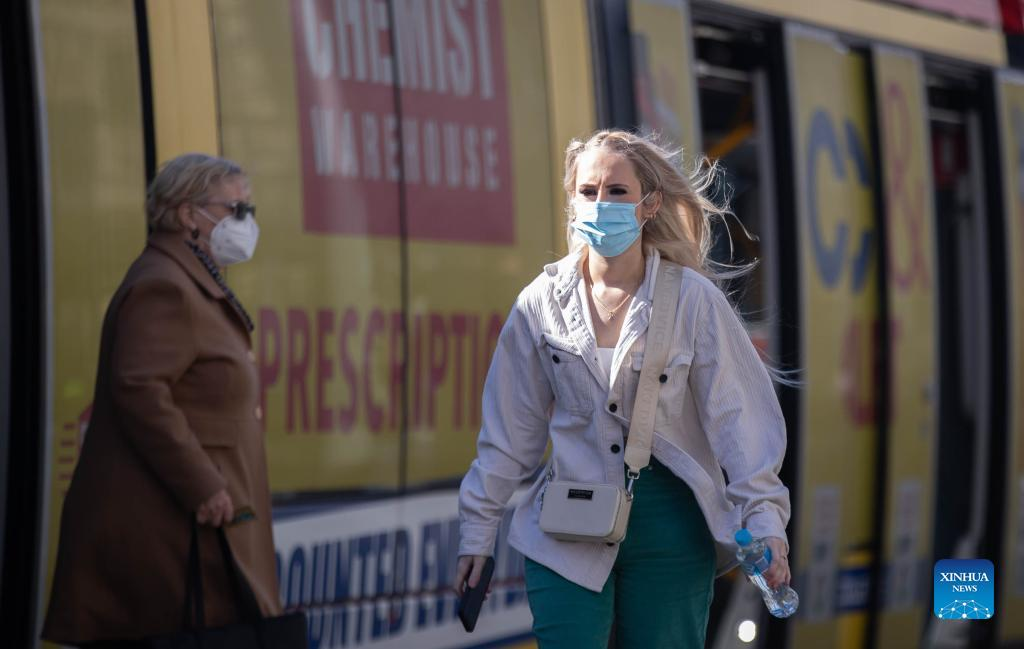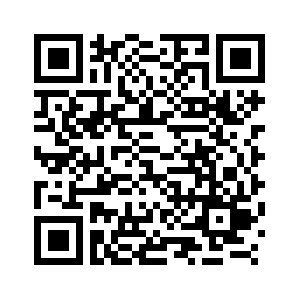
A mask-on notice is seen at a train station in Sydney, Australia, on July 27, 2022. Nearly half of all adults in Australia show signs of having had COVID-19 within the past three to six months, according to a new national report. The findings, released on Wednesday, revealed that by mid-June 46.2 percent of people aged 18 to 89 had caught the virus in the preceding months, a huge leap since the previous study in late February when about 17 percent of adults appeared to have recently been infected. (Photo by Hu Jingchen/Xinhua)
SYDNEY, July 27 (Xinhua) -- Nearly half of all adults in Australia show signs of having had COVID-19 within the past three to six months, according to a new national report.
The findings, released on Wednesday, revealed that by mid-June 46.2 percent of people aged 18 to 89 had caught the virus in the preceding months, a huge leap since the previous study in late February when about 17 percent of adults appeared to have recently been infected.
The study, overseen by the Kirby Institute at the University of New South Wales (UNSW) and the National Center for Immunisation Research and Surveillance (NCIRS), was done in collaboration with an array of institutions, including Australian Red Cross Lifeblood, the Peter Doherty Institute for Infection and Immunity, and the Institute of Clinical Pathology and Medical Research (ICPMR).
The screening, known as a serosurvey, examined about 5,140 samples from blood donors. The researchers were looking for two types of antibodies -- one type, the anti-spike antibodies, indicating a person has been vaccinated or has built up some natural immunity to the virus due to community exposure, while the other antibody, the anti-nucleocapsid protein, indicating a person has had a recent COVID-19 infection.
The findings revealed young adults were the hardest hit, with 61.7 percent of 18 to 29-year-olds having evidence of a recent infection, in comparison to 25.7 percent of those aged 70 to 89.
Antibody prevalence was similar across the nation, even in states such as Western Australia (WA), which had avoided high case numbers throughout much of the pandemic.
Kirby Institute epidemiologist Dorothy Machalek said the serosurvey showed a shortcoming in basing COVID-19 statistics purely on the results of people who have tested positive.
She pointed out, for example, that among the blood donors, there would be those who did not even realise they had had the disease because they may have only experienced "mild symptoms, or none at all, and they may not always have a test to detect the virus."
"These serosurveys provide a more complete picture of how much COVID-19 is out there because they measure antibodies to the virus, created when the body's immune system responds to infection, that remain present for many months afterwards," Machalek said.
The researchers noted the best protection against serious illness from COVID-19 was to be up to date with vaccinations and boosters, in line with current recommendations. ■

People wearing face masks walk in tram station in Sydney, Australia, on July 27, 2022. Nearly half of all adults in Australia show signs of having had COVID-19 within the past three to six months, according to a new national report. The findings, released on Wednesday, revealed that by mid-June 46.2 percent of people aged 18 to 89 had caught the virus in the preceding months, a huge leap since the previous study in late February when about 17 percent of adults appeared to have recently been infected. (Photo by Hu Jingchen/Xinhua)

People wearing face masks walk in tram station in Sydney, Australia, on July 27, 2022. Nearly half of all adults in Australia show signs of having had COVID-19 within the past three to six months, according to a new national report. The findings, released on Wednesday, revealed that by mid-June 46.2 percent of people aged 18 to 89 had caught the virus in the preceding months, a huge leap since the previous study in late February when about 17 percent of adults appeared to have recently been infected. (Photo by Hu Jingchen/Xinhua)



